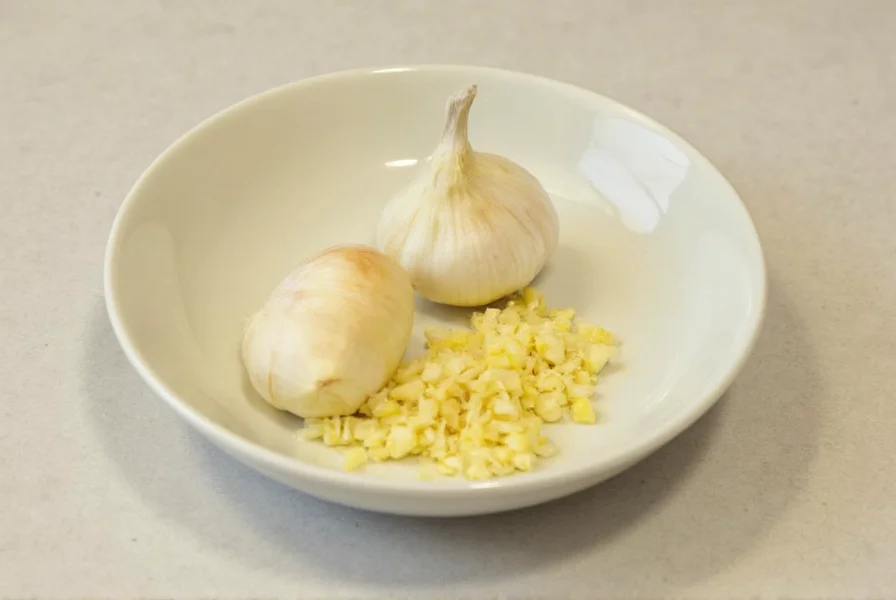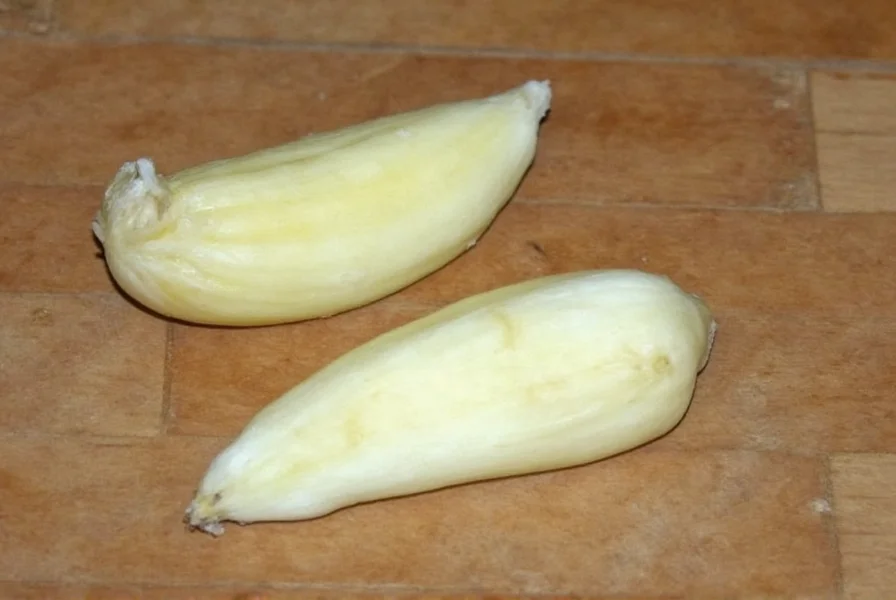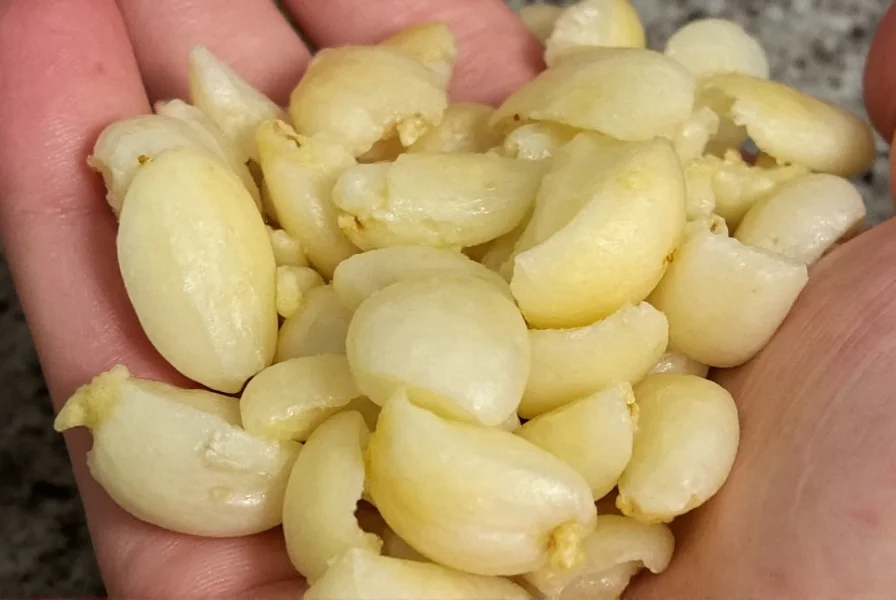Understanding garlic measurements is fundamental to successful cooking. Many recipes specify “1 clove of garlic, minced” without providing equivalent measurements, leaving home cooks wondering about proper quantities. This guide delivers precise information to ensure your culinary creations achieve perfect flavor balance every time.
What Exactly Is One Clove of Minced Garlic?
A single garlic clove refers to one individual segment from a garlic bulb. When properly minced, this single piece transforms into a concentrated flavor agent that can dramatically influence a dish's taste profile. The size of garlic cloves varies, but standard medium cloves—the most common type found in grocery stores—provide consistent measurements when prepared correctly.
| Garlic Form | Equivalent to 1 Clove Minced |
|---|---|
| Fresh garlic clove (medium) | 1 clove |
| Fresh minced garlic | ½ teaspoon (2.5 ml) |
| Bottled minced garlic | ¼ teaspoon (1.25 ml) |
| Garlic powder | ¼ teaspoon (1.25 ml) |
| Garlic salt | ¼ teaspoon (1.25 ml) |
How to Properly Mince Garlic
Proper mincing technique affects both yield and flavor release. Follow these professional steps for optimal results:
- Peel the garlic clove by placing it flat-side down on a cutting board and pressing firmly with the flat side of a chef's knife
- Remove the papery skin and any root remnants
- Cut the clove lengthwise into thin slices
- Rotate the slices 90 degrees and chop crosswise into fine pieces
- Rock the knife blade back and forth over the pieces until uniformly minced
For maximum flavor extraction, sprinkle a pinch of salt over the garlic before the final mincing stage. The salt acts as an abrasive, helping break down the garlic cells and release more flavor compounds.

Garlic Measurement Variations and Considerations
Garlic size directly impacts measurement accuracy. Understanding these variations prevents recipe disasters:
- Small cloves (under 1" long): Yield approximately ⅓ teaspoon minced
- Medium cloves (1-1.5" long): Yield ½ teaspoon minced (standard measurement)
- Large cloves (over 1.5" long): Yield ¾ teaspoon minced
- Elephant garlic (milder flavor): Requires nearly double the amount for equivalent flavor
When precision matters—particularly in delicate sauces or dressings—use a measuring spoon to verify your minced quantity. For robust dishes like stews or roasted vegetables, slight variations won't significantly impact the final result.
Substituting Minced Garlic in Recipes
When fresh garlic isn't available, these substitutions maintain recipe integrity while accounting for flavor differences:
- Bottled minced garlic: Use ¼ teaspoon per fresh clove (contains preservatives that slightly alter flavor)
- Garlic powder: ¼ teaspoon equals one fresh clove (more concentrated, add early in cooking)
- Garlic paste: ⅛ teaspoon per clove (check label for concentration)
- Roasted garlic: 1½ teaspoons per clove (sweeter, milder flavor profile)
Remember that jarred garlic products often contain citric acid or other preservatives that can slightly alter both flavor and cooking behavior compared to freshly minced garlic. When substituting, consider the dish's cooking time and method.
Common Garlic Measurement Mistakes
Avoid these frequent errors that compromise recipe success:
- Estimating instead of measuring: Visual estimates often result in 2-3 times the proper amount
- Not accounting for clove size: Using large cloves when recipes assume medium
- Over-mincing: Creating garlic paste releases excessive enzymes, creating bitter flavors
- Adding too early: Burning minced garlic by adding it before other ingredients
Professional chefs recommend adding minced garlic during the last 30-60 seconds of sautéing other aromatics to prevent burning while maximizing flavor development. Garlic burns at relatively low temperatures (around 325°F/163°C), which creates bitter compounds that ruin dish balance.

Storing Minced Garlic for Maximum Freshness
If you've minced more garlic than needed for your recipe, proper storage extends its usability:
- Refrigerate in an airtight container for up to 5 days
- Add a teaspoon of olive oil to prevent browning
- Freeze in ice cube trays with oil for longer storage (up to 3 months)
- Never store minced garlic in oil at room temperature (botulism risk)
For meal prep efficiency, many professional kitchens mince larger quantities of garlic and store it properly for multiple uses. This practice saves time while ensuring consistent measurements across different recipes.
FAQ: Frequently Asked Questions
How much jarred minced garlic equals one fresh clove?
¼ teaspoon of jarred minced garlic equals one medium fresh garlic clove. Jarred garlic is more concentrated due to preservatives, so you need less than fresh minced garlic (which requires ½ teaspoon per clove).
Can I substitute garlic powder for minced garlic in recipes?
Yes, use ¼ teaspoon garlic powder to replace one minced garlic clove. Add it early in cooking since powder needs time to rehydrate and release flavor. Remember that powder lacks the fresh brightness of minced garlic but works well in dry rubs and long-cooking dishes.
Why does my garlic burn so quickly when cooking?
Minced garlic burns at temperatures above 325°F (163°C) because its small pieces have more surface area exposed to heat. To prevent burning, add minced garlic during the last 30-60 seconds of sautéing other ingredients, or lower the heat significantly before adding it to the pan.
How can I reduce garlic breath after cooking with fresh garlic?
Chew fresh parsley, apples, or mint leaves to neutralize garlic compounds. Drinking milk (especially whole milk) while eating garlic-containing dishes reduces the intensity of garlic breath by binding to the sulfur compounds responsible for the odor.
Does roasting garlic change the measurement equivalent?
Yes, roasted garlic has a milder flavor, so you need more—approximately 1½ teaspoons of roasted garlic paste equals one raw minced clove. Roasting transforms garlic's sharp compounds into sweeter, caramelized flavors that require higher quantities to achieve similar flavor impact.











 浙公网安备
33010002000092号
浙公网安备
33010002000092号 浙B2-20120091-4
浙B2-20120091-4